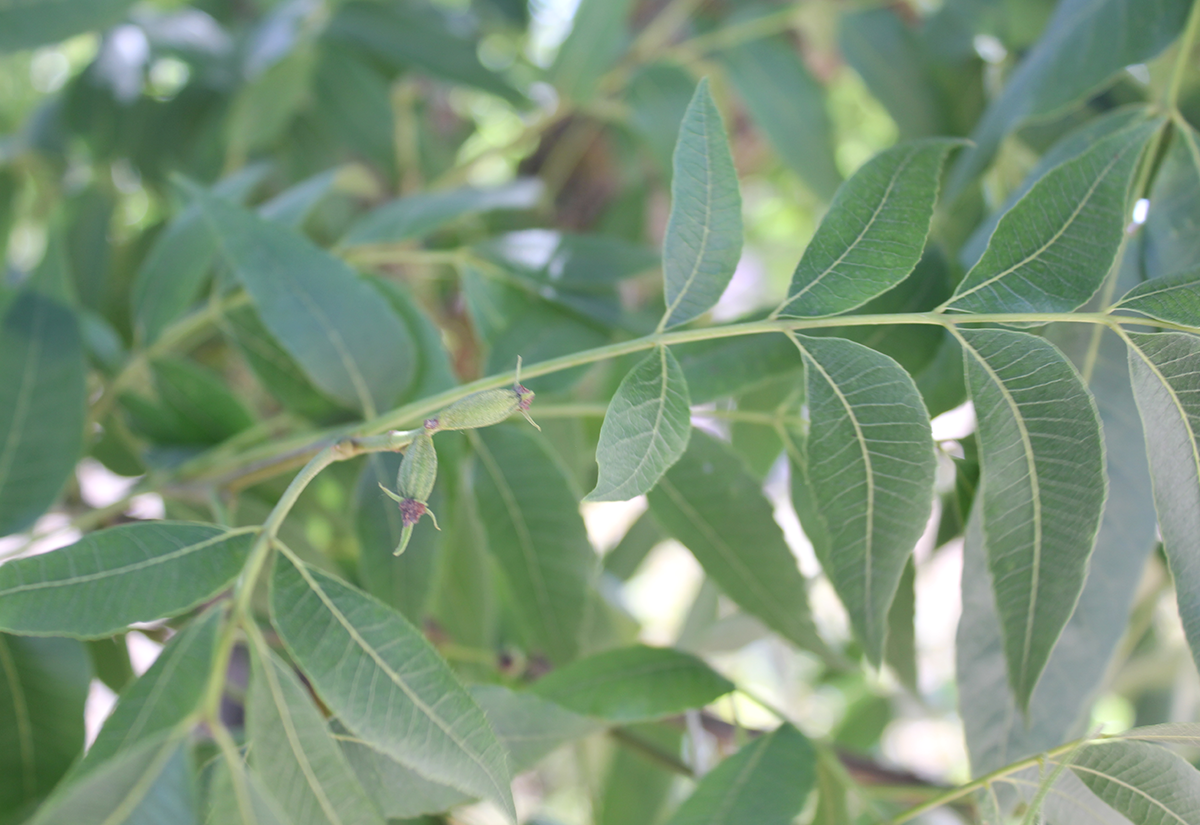
Environmental conditions in Arizona and California favor quality pecan production, except when it comes to the micronutrient zinc.
New Mexico Cooperative Extension Specialist in Pecan Orchard Management Richard Heerema noted that pecan trees are sensitive to zinc deficiency. Zinc deficiency occurs when orchards are planted in soils that are alkaline and calcareous. Zinc is not readily available in those soils because solubility of zinc decreases 100-fold with each one-unit increase in soil pH.
Symptoms of zinc deficiency include abnormal growth patterns where shoots have a rosette appearance and leaf shape, and size and color are affected. Leaflets are narrow and smaller with wavy edges and a pale or chlorotic appearance.
In a University of Arizona Cooperative Extension research paper with Dr. Jim Walworth, Heerema noted that foliar application of nutrients is effective in supplying pecan’s zinc requirement. He did note there are challenges with foliar applications.
Foliar-applied zinc is immobile in the plant and not transported through the vascular system to other parts of the tree that also need zinc. Only young leaves that are actively expanding when the spray makes contact will absorb the zinc needed. Foliar sprays will not alleviate zinc deficiencies on older leaves that are already fully expanded. Pecan trees do not have the ability to store up and later move foliar-applied zinc to leaves that were not present when the foliar spray was applied.
Heerema and Walworth’s research showed that it is important to make frequent zinc foliar applications during the growing season. Due to the immobility of foliar applied zinc, good spray coverage of the entire canopy is essential. Immature leaves that do not receive direct contact are at risk of developing zinc deficiency symptoms.
Spray applications should begin at bud break and continue until vegetative growth subsides. Beginning at bud break and continuing for two to three months, multiple spray applications can maintain adequate zinc in trees. Young trees may be sprayed weekly while mature trees will need three to five sprays per season done at two-week intervals.
In mature orchards, zinc fertilizer solutions should be applied with an air-blast sprayer at a rate of 100 gallons per acre. The most commonly used source of zinc for foliar spray applications is zinc sulfate monohydrate (ZnSO4; approximately 36% zinc by weight). If using a dry powder form, two to three pounds zinc sulfate fertilizer are mixed with 100 gallons water. Zinc sulfate is not very soluble and should be premixed or added to a sprayer with good agitation.











